5 Kinds of Animals You Might See Tide Pooling in Hawai’i
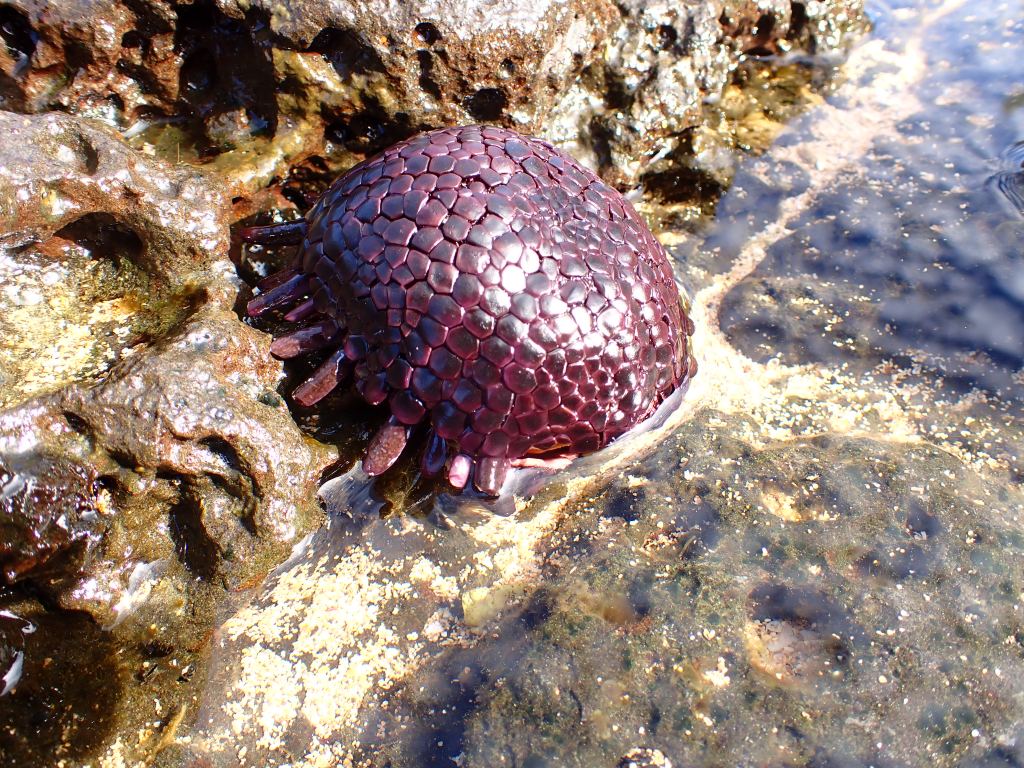
The Hawai’ian Islands, isolated in the middle of the Pacific Ocean, are known for paradise beaches, vibrant wildlife, and excellent snorkeling. But many don’t know that Hawai’i is also an excellent place for tide pooling. Although not nearly as popular as it is on the western coast of the US, tide pooling in Hawai’i yields an incredible array of flora and fauna that is so vastly different than what we see on the mainland.
The Hawai’ian islands are volcanic in origin and this makes for many rocky coastlines. What were once lava flows are now homes to hundreds of species of fish and invertebrates. Watch out though, because invisible algae covering these volcanic lava flows makes them very slippery.
In this post, I’m going to go over just a few of the common animals you might see if go tide pooling casually in Hawai’i. We’ll get to tide pooling at night in Hawai’i, tips for the islands, and more unusual animals you might encounter in other posts.
Casual Tide Pooling Finds in Hawai’i
1. Sea urchins
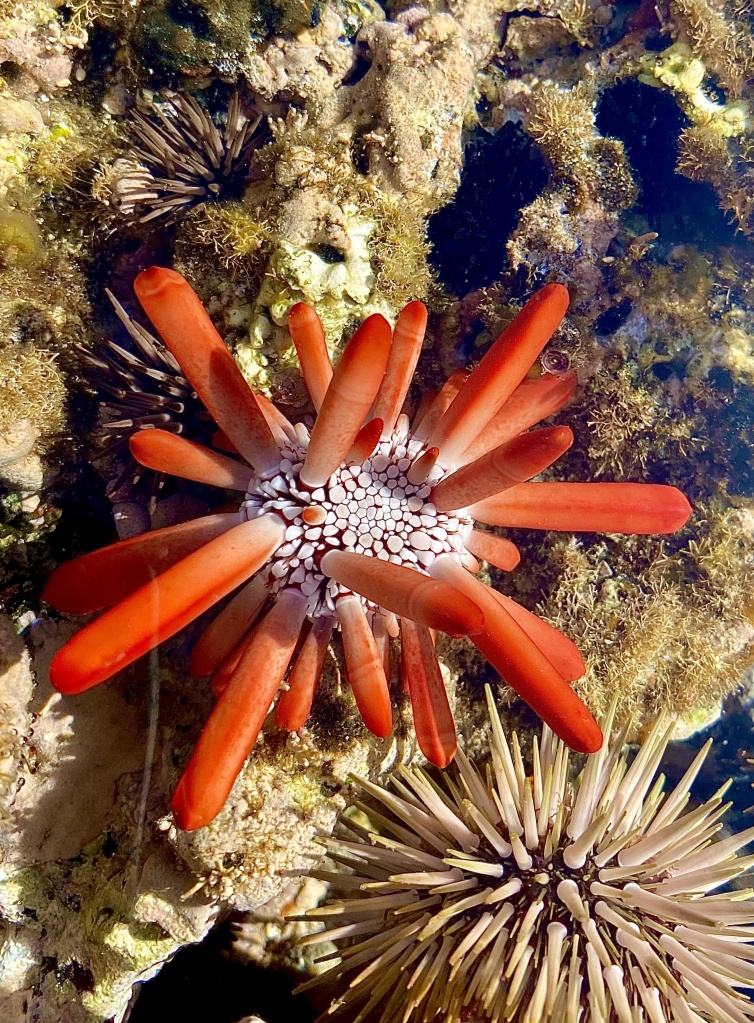
If the rocky coasts of SoCal are dominated by anemones and the rocky coasts of Alaska are dominated by sea stars, then the rocky coasts of Hawai’i are dominated by urchins. In protected areas, the most common urchin in the intertidal is the Indo-Pacific rock boring urchin (Echinometra mathaei), the holes of which you can see long after the urchin has moved on. The red pencil spine urchin (Heterocentrotus mamillatus) is also fairly preventlent and easy to spot with its bright red, thick spines. Banded sea urchins (Echinothrix calamaris), collector’s urchins (Tripneustes gratilla), and longspine urchins (Diadema savignyi) can all makes appearances in protected intertidal areas as well. Watch your step though because these urchin spines are sharp and they don’t hide under rocks or in deep water like our local urchins in California do.
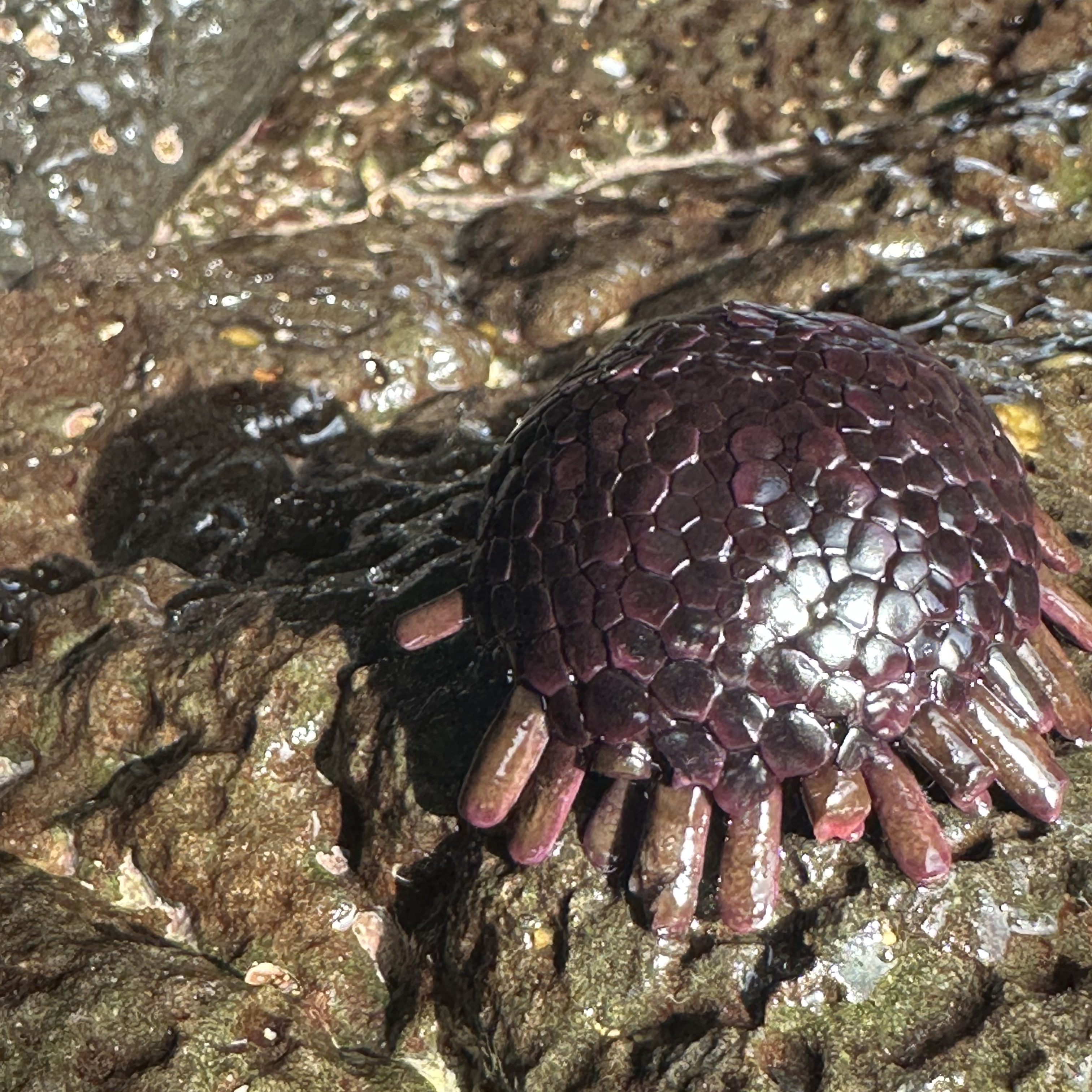
In areas exposed to wave shock, the most prominent animal at all is the shingle urchin (Colobocentrotus atratus), a fascinating little creature that can hang onto a rock even under extreme force from the surf. Also known as the helmet urchin, their spines have adapted to form a plating armor against predators and the surf. They gather in their hundreds on rocks as high as the mid intertidal, a deep purple when wet but almost exactly the black color of the lava rock when dry.
2. Reef fish
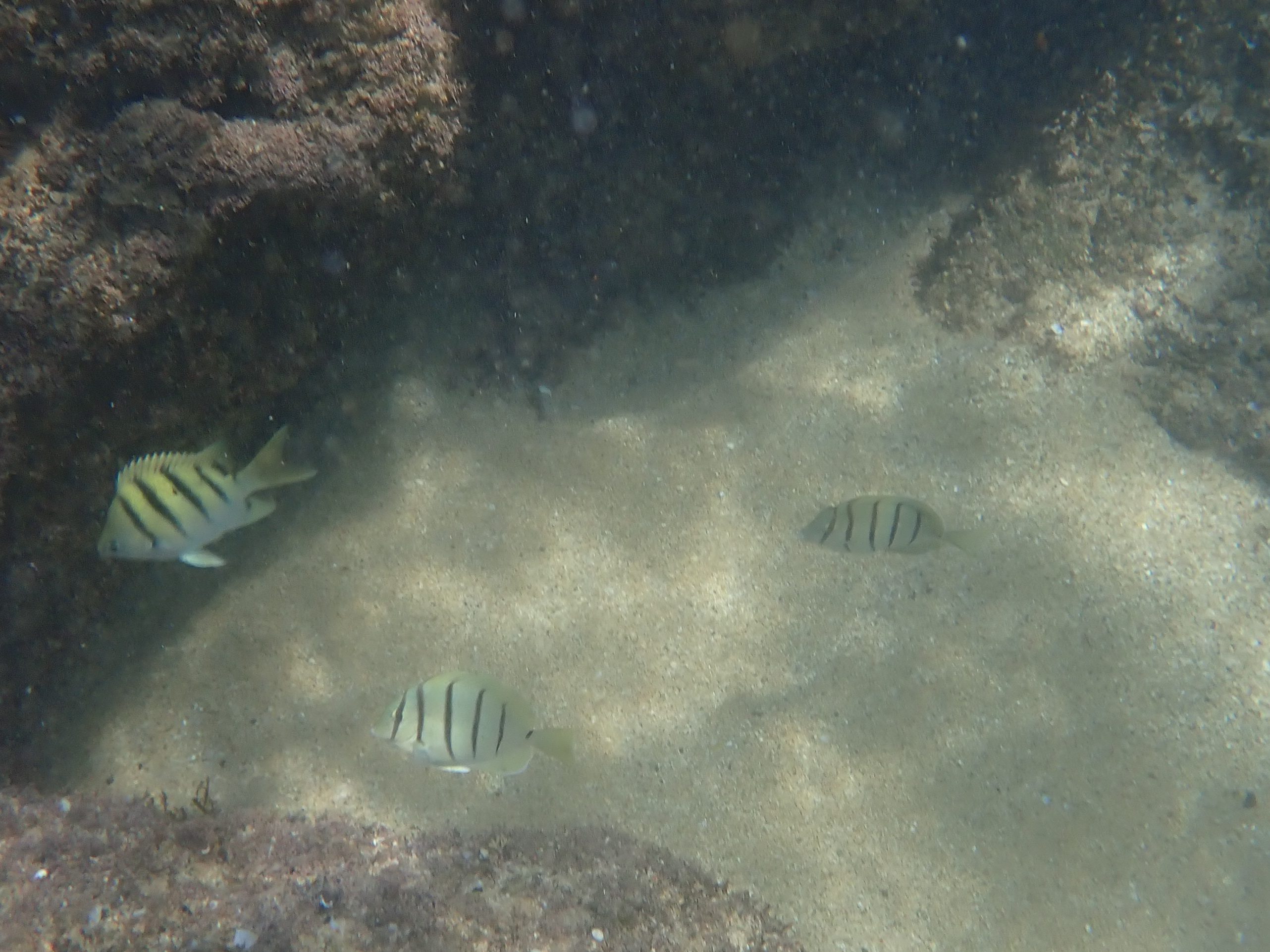
That’s right! Reef fish that you’ll see snorkeling in Hawai’i are often found in the tide pools, albeit in miniature form. Juveniles of many species live in large rock pools as a shelter from predators until they grow large enough to leave. Hawai’ian Sargent majors (Abudefduf abdominalis), convict tangs (Acanthurus triostegus), and various kinds of wrasses and butterfly fish are the most common suspects. Overall, the Hawai’ian tide pools seem to have the greatest amount of fish of any tide pools I’ve visited.
3. Blennies
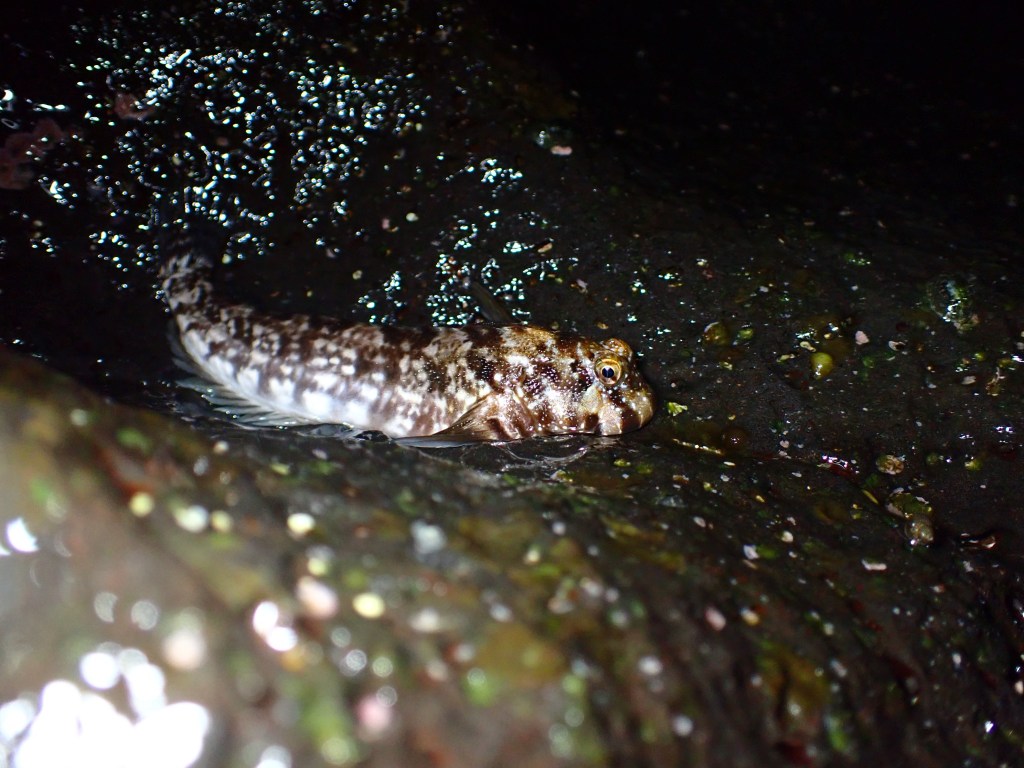
Here is another kind of fish that is very common on Hawai’i’s rocky shores: blennies. The zebra blenny (Istiblennius zebra) is by far the most prevelant and can be found in sheltered areas even in very small pools with little water. Reaching max length at about 7.5 inches, these fish live their entire lives in the tide pools instead of venturing onto the reef when they become adults. Don’t be surprised if you find one of these guys out of the water: they are notorious for jumping and being able to survive in exposed to air for some time. Which is how they earn their other common names including zebra rock skippers and jumping jacks.
4. Sea cucumbers
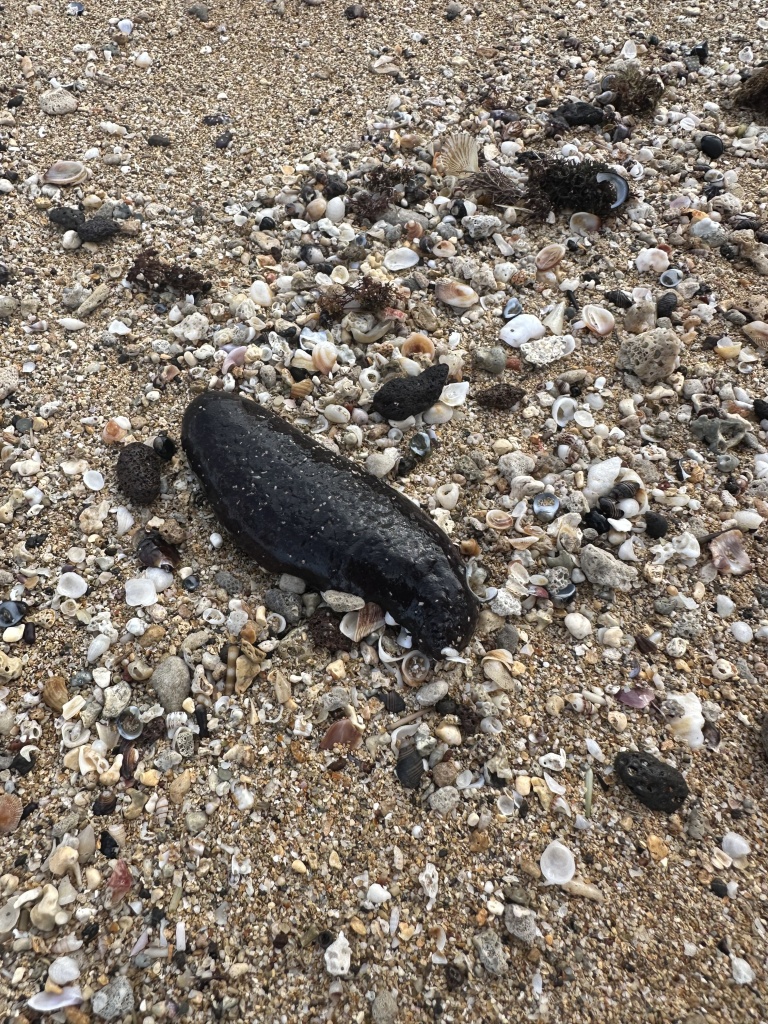
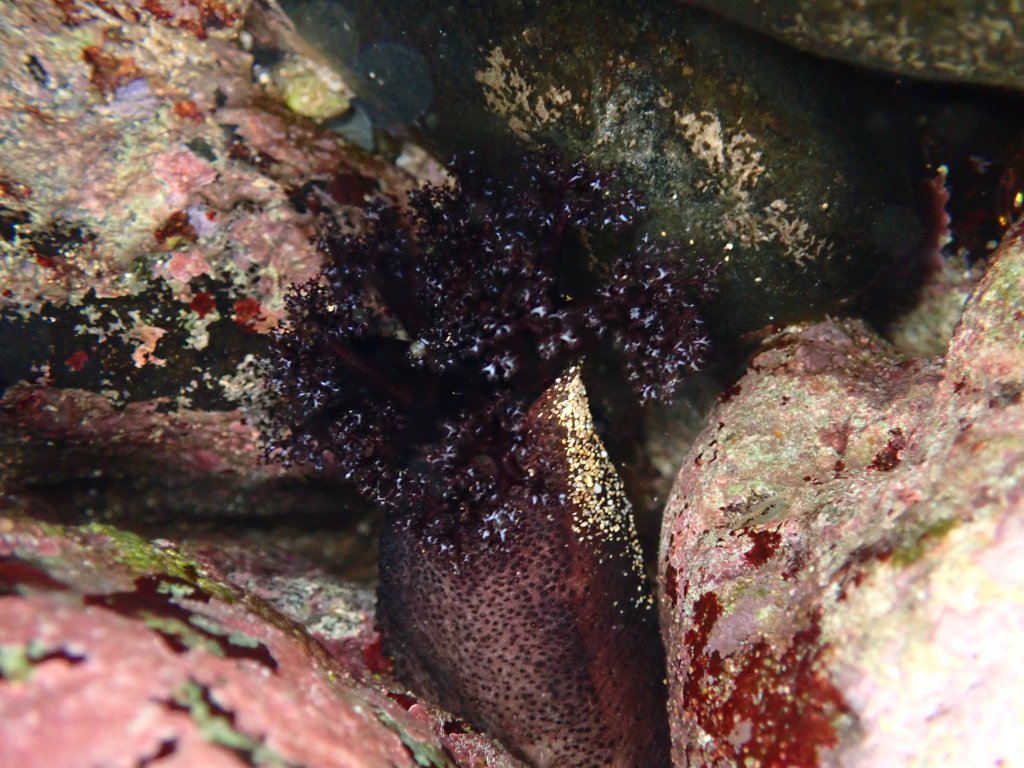
Close behind urchins, sea cucumbers come in second for the most prominent echinoderms in Hawai’i’s tide pools. These animals are very uncommon in California where I am accustomed to tide pooling, but I had to make sure I didn’t step on them while in Hawai’i. From the ashy sea cucumber (Holothuria cinerascens) that can be found wedged into rock crevices with only it’s feeding arms out to the stubborn sea cucumber (Holothuria pervicax) covered in knobby appendages, these animals are ubiquitous in most intertidal habitats. We even found a large number washed up on the sand every morning, but couldn’t with surety identify the species.
5. Crabs
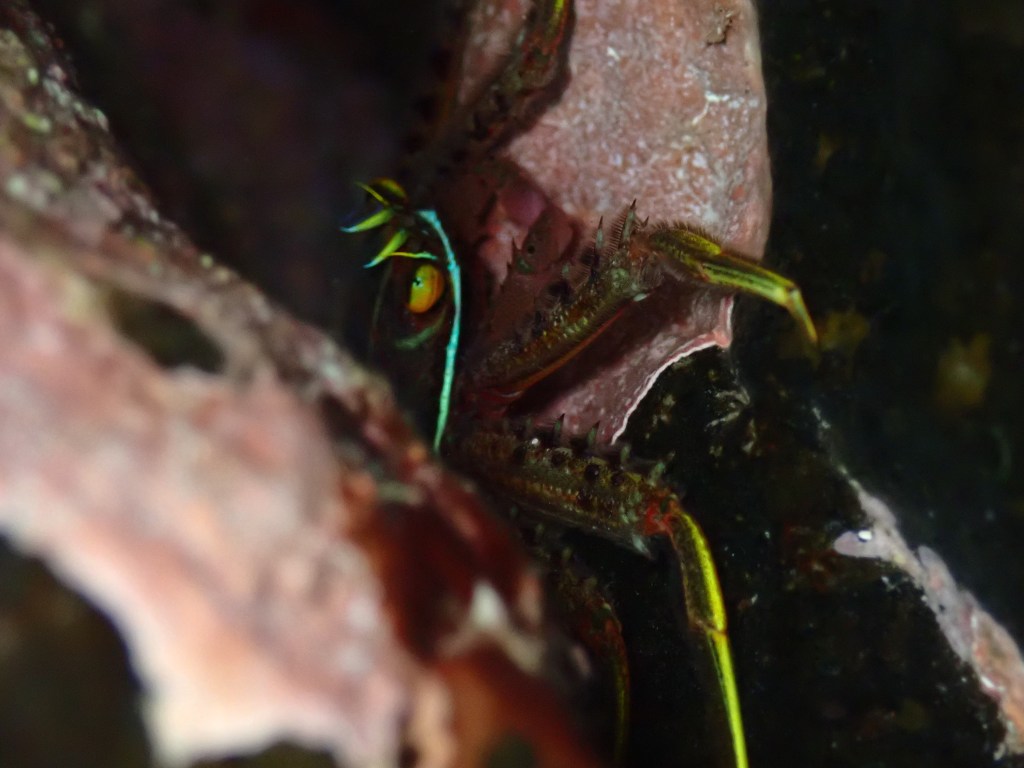
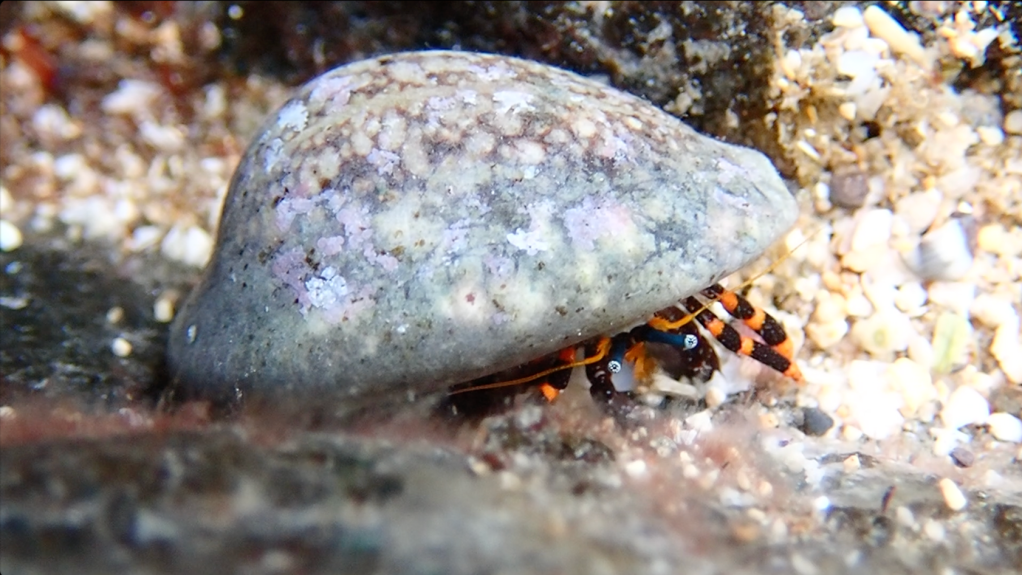
The trusty clean up crew of the tide pools isn’t lacking in Hawai’i: crabs abound both during the day and at night. Xanthid crabs (Family Xanthidae) are masters of camouflage and come in a variety of colors and patterns. The thin shelled rock crab are monsters that can reach up to 8 inches across and crawl out of the water on top of boulders. And the flat rock crab (Percnon planissimum) resembles an alien striped with green and yellow, constantly flicking feathered appendages in and out of their mouths filter feeding. Perhaps the most common and fun crab to spot is the endemic painted hermit crab (Calcinus pictus). Only found in Hawai’i, these crabs have bright orange stripes circling their legs.
Another intertidal crab you might see in Hawai’i is the pallid ghost crab (Ocypode pallidula), although not on rocky shores. These crabs burrow into the sand with each tide and are the speediest creatures for their size I have ever seen. The genus name, Ocypode, literally means swift foot. Its larger, but nocturnal cousin, the horned ghost crab (Ocypode ceratophthalmus), has been clocked at running about 4.5 mph. While that doesn’t sound like much, if you scale up this speed to account for the crab’s small size, it would be equivalent to a human running about 210 mph!
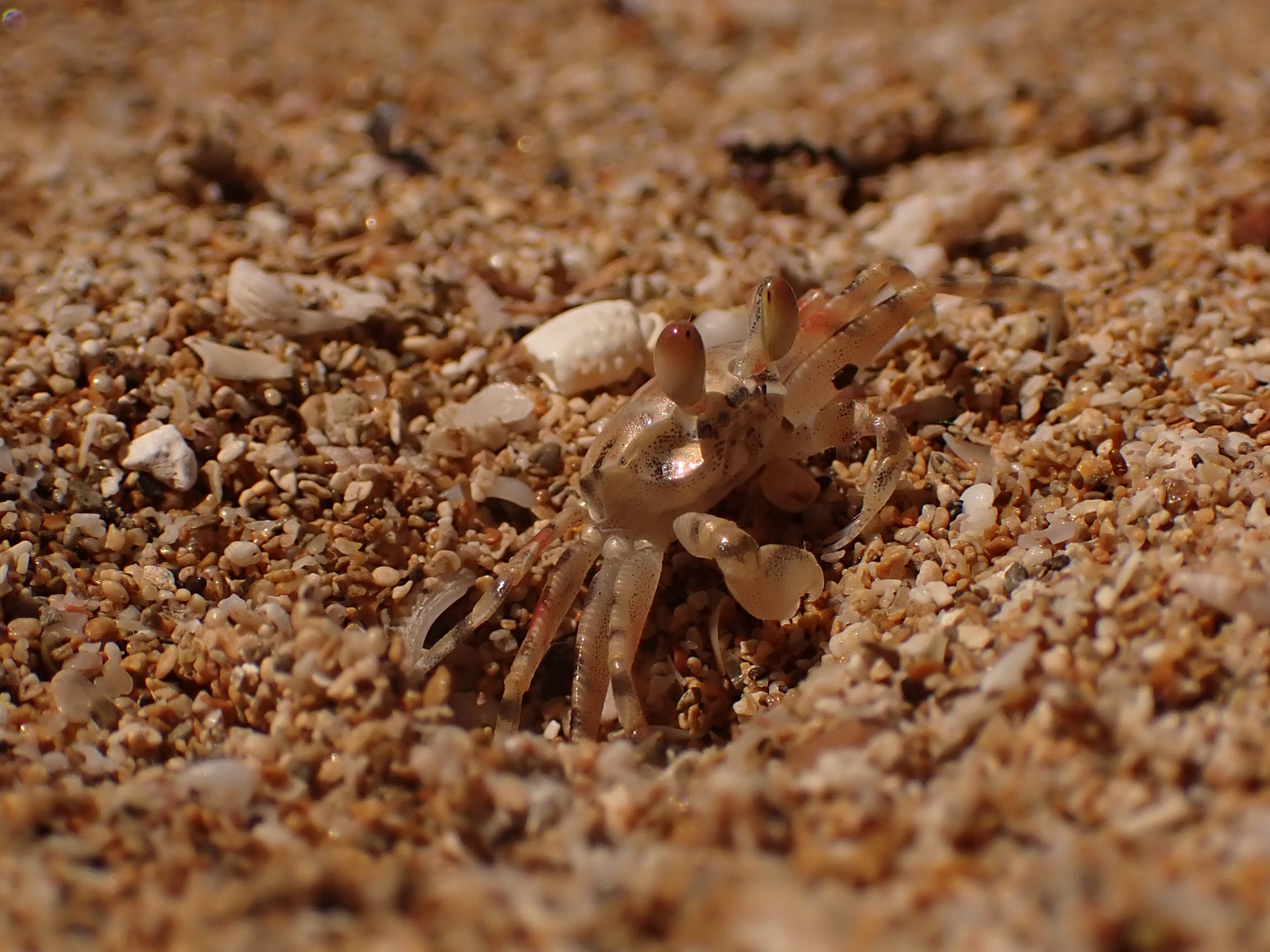

Categories
tags
Subscribe to the blog
Sign up to receive weekly emails with tide pooling information and guides so you never miss a post!

Leave a comment